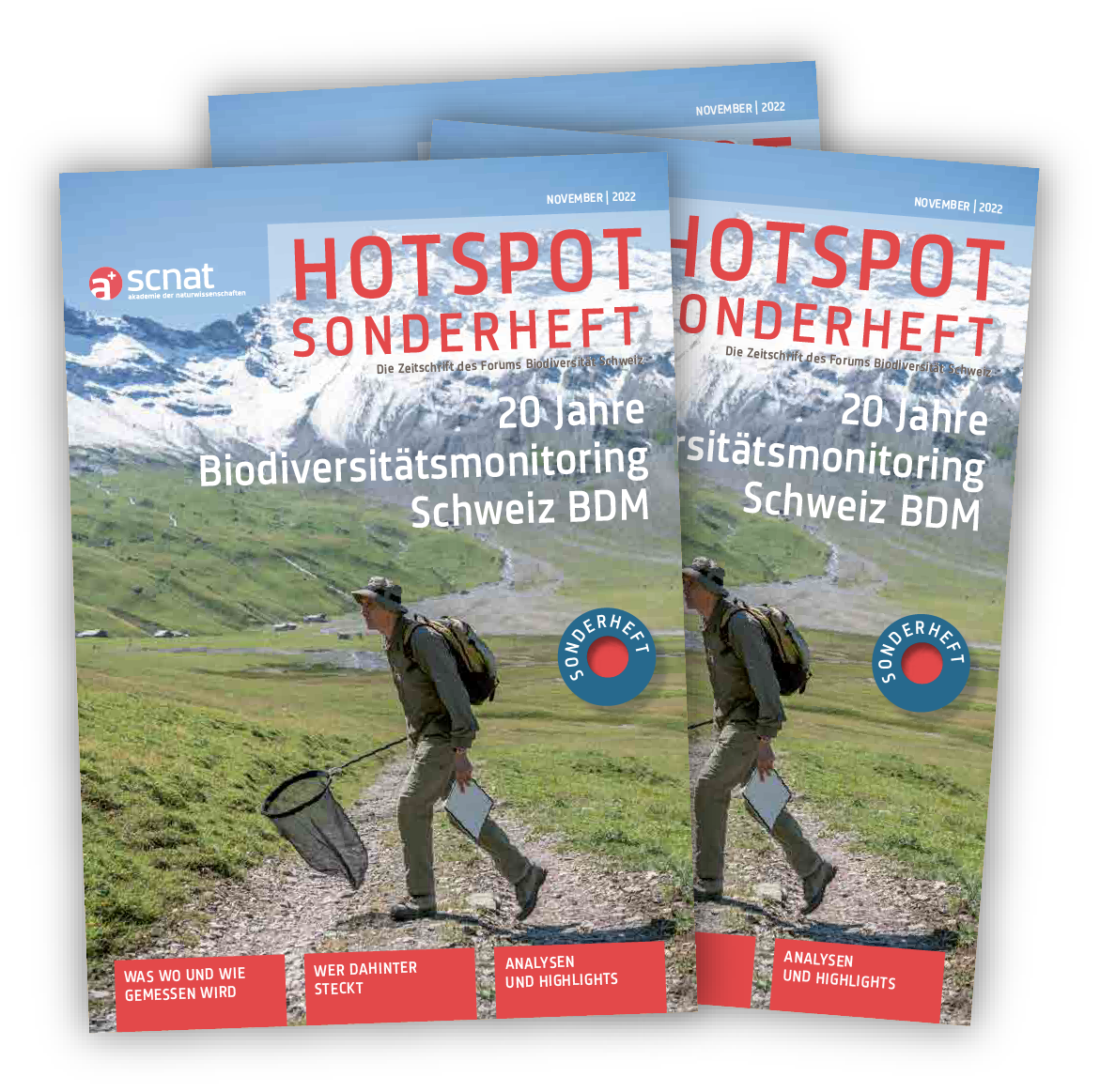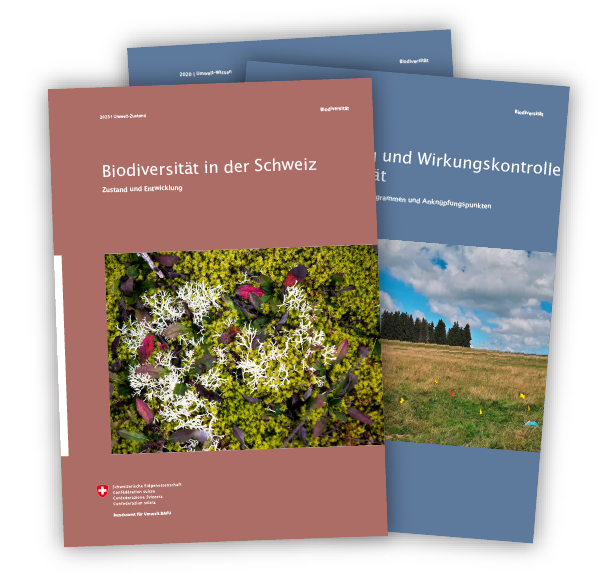Impact of climate change on biodiversity
Thanks to the two-decade time series, BDM data can also be used to make statements about how the spatial distribution of species is changing. It has been found that some species now occur at higher altitudes than was the case 20 years ago. Among other things, this migration to higher altitudes is associated with the rise in temperatures due to climate change.
Butterflies in biodiversity promotion areas
BDM is able to record butterflies with pinpoint accuracy using GPS. If a transect runs through biodiversity promotion areas (BPAs), more butterfly individuals are counted than in sections along intensively used meadows and pastures. However, we are a long way away from achieving the densities of individuals that we are accustomed to from dry meadows and pastures of national importance, even in BPAs. Similar patterns can also be found in the diversity of vascular plants, as an analysis of data from ALL-EMA shows.
Increasing monotony in snails

The diversity of species communities in meadows and pastures is calculated from the BDM data. This is one of 52 legislative indicators used to monitor the legislative objectives. The time series shows that the species communities of snails are becoming increasingly similar. Closer analysis reveals that there are only a handful of species that play a decisive role. Among them is the crested vertigo, an already common snail species whose distribution is increasing. Among the other species, by contrast, are rare species whose frequency is declining.
Basis for the Swiss butterfly index

The BDM's butterfly data is highly suitable for supplementing the records compiled by info fauna. This is because particularly spectacular or very rare species are often reported, while the data on medium-frequency species is rather sparse. BDM makes an important contribution to this with its regular sampling grid and standardised recording methodology. The butterfly index can be calculated from the combined dataset. As the graphs below show, the population of thermophilic species has increased in recent years, while psychrophilous species have tended to decline.







